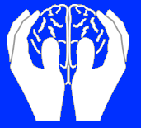Публикуваме тази статия с разрешението на Mind Alive Inc.
The following excerpt is from the Appendices of "The Rediscovery of Audio Visual Entrainment Technology" by Dave Siever, C.E.T. copyright 1997
Audio-Visual Stimulation as a Treatment for Chronic Pain
This pilot study by Mike Twittey and Dave Siever was to test the effectiveness of the DAVIDTM series of light and sound devices as a treatment for chronic pain and the psychological stress associated with chronic pain. The study included participants experiencing pain as a result of motor vehicle accidents, arthritis, lupus, fibromyalgia and temporal mandibular joint dysfunction (TMJ). The majority of the participants suffered from fibromyalgia and many of the participants had multiple pain complaints. At the onset of the study, there were fifteen participants, however two participants withdrew before treatment began and were not included in this study. During the study, one participant withdrew because of terminal illness and two more withdrew because of non-compliance with treatment.
Treatment used the DAVIDTM series of audio-visual entrainment (AVE) devices. Each participant was loaned a unit for use at home and instructed on the operation of the unit.
The participants measured pain intensity by keeping a daily diary of their pain using the 10 cm visual analogue scale (VAS). Their scores were averaged over each month. To measure depression and general psychological distress, we had the participants fill out the Beck Depression Scale (once before treatment and once again two months into treatment). Participants' daily diaries were also used to record the length of time and type of treatment each time they used the DAVIDTM. Treatment continued for three months, with the VAS being recorded daily and Beck measures being taken bi-monthly. Treatment then ended and post treatment measures were taken.
Improvements in pain ratings were significant after two months of treatment, t(9)=4.08, p<0.005. The base rate mean was 49.2 +/-14.92. Following treatment, the mean was 29.09 +/-19.02. Improvements in depression were also significant after two months, t(3)=2.51, p<0.05, with a mean changing from 16.0 +/-10.13 to 10.25 +/-11.32. Figure 1 shows the trends throughout the study.
Figure 1









